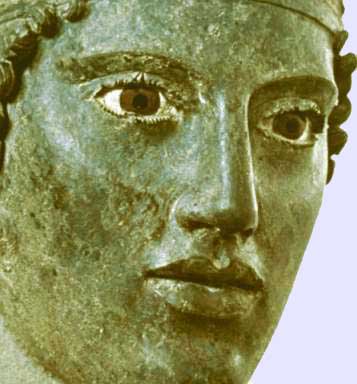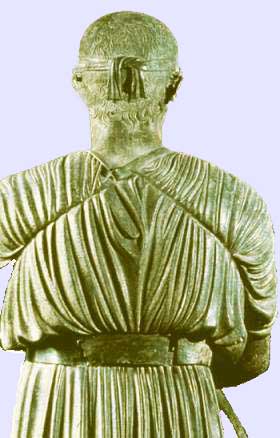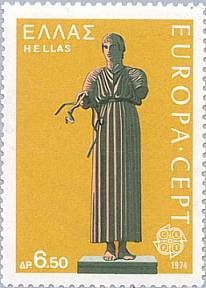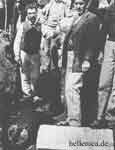.
Der Wagenlenker von Delphi

Discovery place of the Charioteer |
 |
The Charioteer (Heniochos) of Delphi found in 1896 by French excavators. His four horses are lost probably by an earthquake around 373 AD. The face is according to specialists asymmetric in order to make it more realistic. His eyes are made of Onyx. The lips are made of cooper and his head band impressed in silver. It is interesting to read what scholars say about the Charioteer, sometimes I think with an extreme idealism: Not only does it celebrate, like the Pythian odes (of Pindar), a victory won at the festival games, but the ethos which it conveys is a manifestation of Pindaric arete... the "innate excellence" of noble natures which gives them proficiency and pride in their human endeavors before the gods. J. J. Pollitt in James Whitley the Archeology of Ancient Greece.

A 1.8 m Bronze Statue “Charioteer of Delphi”. Produced in 7 separate pieces by the sculptor Sotades. The left hand is missing. It is dedicated to Apollo by Polyzalos of Gela, a son of Deinomenos , tyrant of Gela in Sicily, the winner of a Pythian Games chariot race (478/0) BC (From a inscription on the base that survived).
Polyzalos, victorious with his horses dedicated me / son of Deinomenes, whom make prosper, honoured Apollo
The Charioteer has a Chiton fastened well avoiding blown up during the race.

Reconstruction of the Delphi Charioteer Sculpture, part that includes a chariot with four horses and a boy with a horse.



Delphi Charioteer Stamps

10000 Drachmae, Greece 1947
Archaeological Museum of Delphi
| Ancient Greece
Science, Technology , Medicine , Warfare, , Biographies , Life , Cities/Places/Maps , Arts , Literature , Philosophy ,Olympics, Mythology , History , Images Medieval Greece / Byzantine Empire Science, Technology, Arts, , Warfare , Literature, Biographies, Icons, History Modern Greece Cities, Islands, Regions, Fauna/Flora ,Biographies , History , Warfare, Science/Technology, Literature, Music , Arts , Film/Actors , Sport , Fashion --- |


